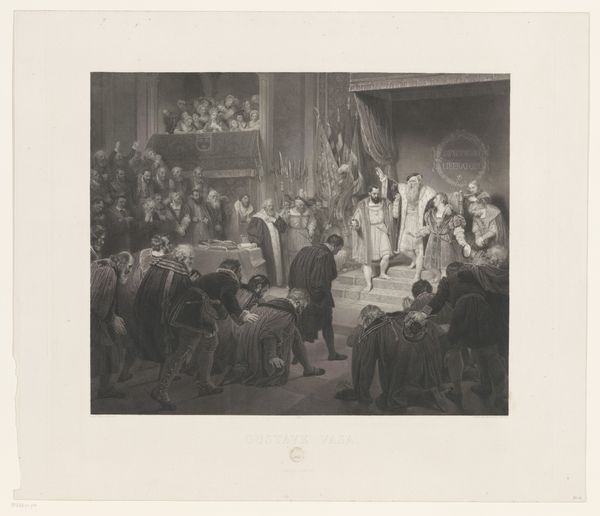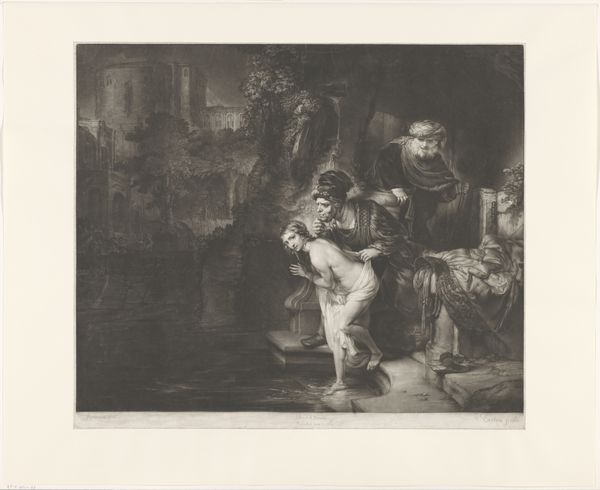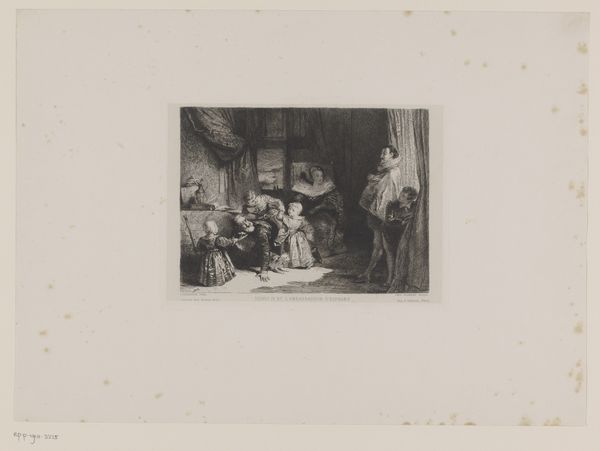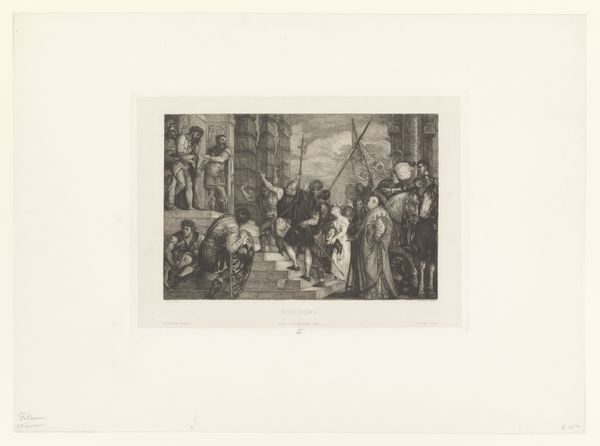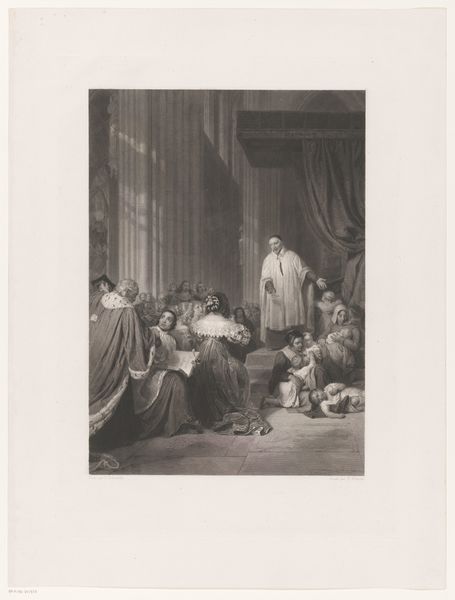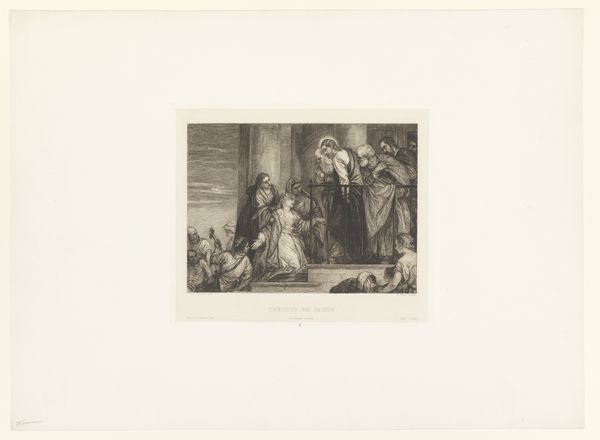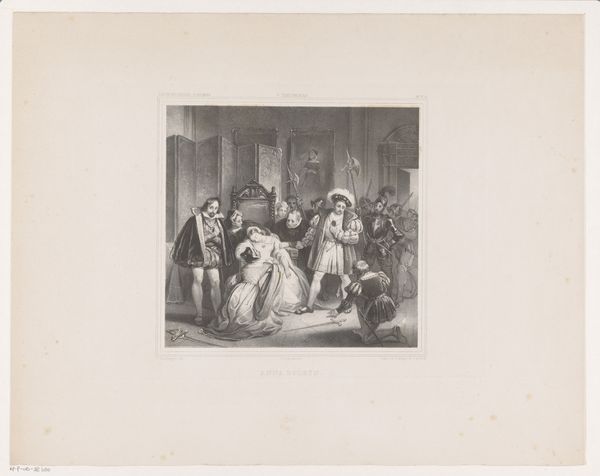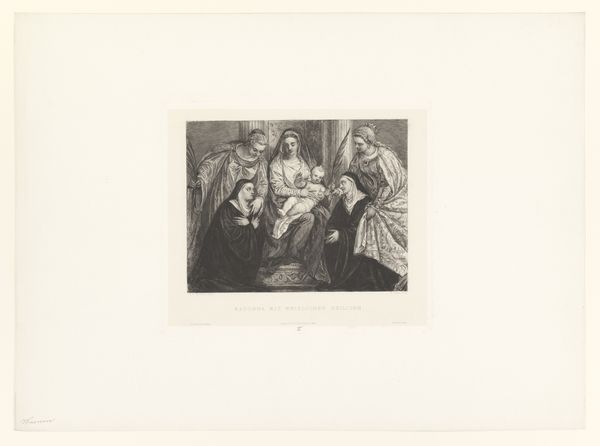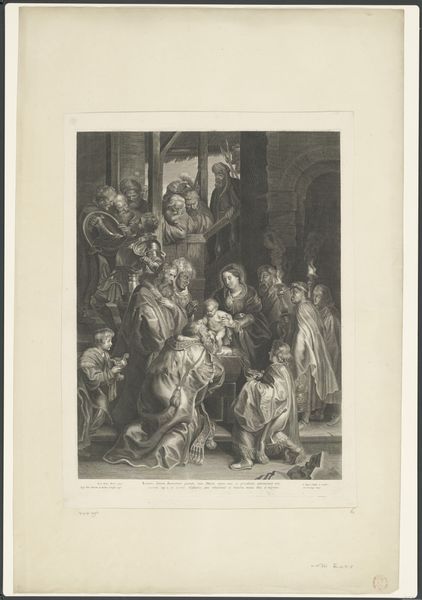
Dimensions: height 466 mm, width 587 mm
Copyright: Rijks Museum: Open Domain
Curator: Welcome. We’re standing before a print titled "Interieur met een lezende man tussen dronken figuren," or "Interior with a Reading Man among Drunken Figures," an engraving attributed to Achille Martinet, although it's after an original composition by another artist, from somewhere between 1816 and 1877. Editor: Woah. Talk about a mood. It's got this chiaroscuro thing going, like a Caravaggio painting stumbled into a frat party. Look at that one poor dude, all engrossed in his book while utter chaos reigns around him. The faces are brilliant. Curator: Indeed. The engraving style, with its intricate lines and dramatic contrasts of light and shadow, echoes the Baroque, giving it a sense of history and weight. But beyond the aesthetics, prints like these served a crucial social function back then. Editor: Ah, yes, spreading stories, like visual gossip. So, what tale do we think is being told here? Is this some sort of cautionary fable? "Beware the perils of too much knowledge"? Curator: Perhaps not perils of knowledge exactly. But notice how the reading man becomes an emblem of reason amid revelry. Prints like these reinforced societal norms by illustrating the consequences of excess, reaching a broader public than painted artworks could. They are usually very cheap compared with painted artwork. It made art much more accessible. Editor: So, like a Victorian-era PSA? Fascinating! And it’s not preachy. It captures something real in that clash of worlds: the introverted versus the extroverted, or just the different ways we seek escape. Though, frankly, given those rowdy figures, I know which corner of that room I’d rather be in. Curator: That's an astute point. Also, considering the period, we need to be attentive to potential messages about class, morality, and even politics that the original artist and the engraver wanted to transmit. Who had the ability to buy and engage with such imagery and the role the printing plays? These are important details when thinking about it's purpose at the time. Editor: Hmm. Food for thought. I can’t help but wonder what that reading man is reading and what solace he finds there while all hell breaks loose! Perhaps it is the one that tells the true story of all this. Curator: It is compelling. Thank you for these personal insights; considering its public life and what made the artwork important in its day along with a modern interpretation is important. Editor: My pleasure! This little print is way more layered than it first appears; a rowdy and thoughtful one for sure.
Comments
No comments
Be the first to comment and join the conversation on the ultimate creative platform.

